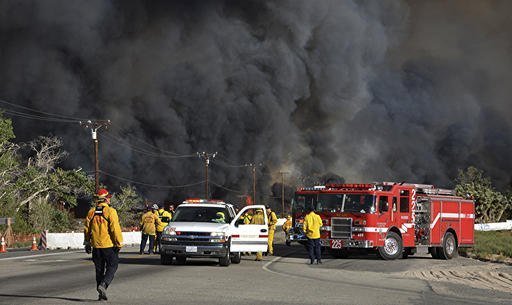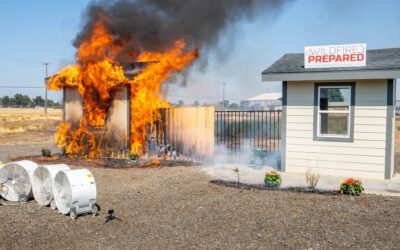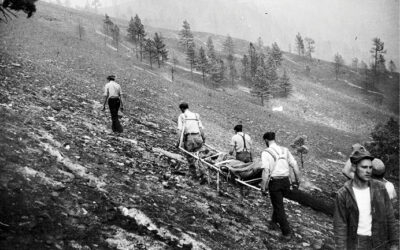U.S. Forest Service sees more people not heeding orders and instead staying home

This Tuesday, Aug. 16, 2016 photo Heavy fire envelopes Hwy 138 at Hess Rd in Phelan, Calif. as firefighters prepare to battle a wildfire spreading through San Bernardino County. Officials in charge of the battle against California’s newest huge wildfire estimate that only about half of the 4,500 residents of the threatened town of Wrightwood have complied with evacuation orders. The fire is climbing the flanks of the San Gabriel Mountains, where Wrightwood sits at an elevation around 5,900 feet. (AP Photo/Rick McClure)2
FONTANA, Calif. (AP) — Within hours, towering, fast-moving flames had ravaged pine forests near the California ski town of Wrightwood — but only half of its more than 4,500 residents had heeded mandatory evacuation orders.
Officials say it was another example of a disturbing trend in the state as infernos speed through drought-starved vegetation during what could be California’s most hazardous fire season on record.
Instead of heading for safety, many homeowners are staying put and dialing 911 for help, U.S. Forest Service spokesman John Miller said
“We have seen that throughout the state this year,” said Miller, who is assigned to San Bernardino National Forest.
Crews, however, aren’t always able to reach those who stay behind.
Some say wildfires have now become a part of living in the wildlands.
Kim Boyle, who has experienced a half-dozen wildfires during her decade in Wrightwood, said she would evacuate if she saw a fire actually burning in town.
“But it’d have to be closer for me, and I think that’s true for a lot of folks around here because they’ve been through this so many times,” she said.
The fire 60 miles east of Los Angeles cast an ominous gray-and-orange haze over the picturesque town at an elevation of 6,000 feet that’s known for its 1930s cabins.
The blaze began Tuesday in the Cajon Pass region in hot, gusty conditions and swallowed an undetermined number of homes as it scorched nearly 50 square miles in mountain and desert areas.
Air tankers bombarded rugged slopes with fire retardant Thursday and a squadron of helicopters dropped load after load of water. On the ground, firefighters and bulldozers worked to protect Wrightwood and other areas high in the San Gabriel Mountains.
More than 34,000 homes and some 82,000 residents were under evacuation orders at one point. No fire-related deaths have been reported so far in that blaze, but bodies have been found during other fires that prompted mandatory evacuations.
In June, authorities found the burned remains of a man and woman who were caretakers of property in an area where an evacuation order had been issued near Potrero, about 45 miles east of San Diego.
San Diego fire Capt. Robert Allen said fire engines have been stuck behind vehicles of people who have waited to the last second to leave.
“I can understand their feelings but at the same time it creates a hazard,” he said. “Not only do we have a fire to fight — now we have to save lives.”
Leaving or staying when fire approaches is often a personal decision — even though California and some other states consider it a criminal offense to ignore mandatory evacuation orders.
Such offences, however, are rarely prosecuted, according to the American Bar Association.
Boyle said her family felt an obligation to stay and keep their Wrightwood Market open to support firefighters. She figured it would take 10 minutes to pack up family photos, important documents and clothes when they did decide to leave.
“Firemen come in and tell us what’s going on, and I think that helps us feel better because we get the scoop from them,” she said. “I trust they will do what they need to do and have always done for us. There have been a lot of wildfires around here but the town has always been safe.”
Many families that did evacuate will likely return and find their homes are gone.
Former volunteer firefighter Steve Boyd, 67, stayed behind during a 2003 blaze to protect his home in Lytle Creek from looters. But he decided to evacuate this week.
“It’s just stuff,” said Boyd, who joined a stream of vehicles on the only road out of town and headed to a shelter.
_____
Weber reported from Wrightwood and Watson from San Diego. Associated Press writers John Antczak and Robert Jablon in Los Angeles contributed to this report.
Copyright 2016 The Associated Press. All rights reserved. This material may not be published, broadcast, rewritten or redistributed.




